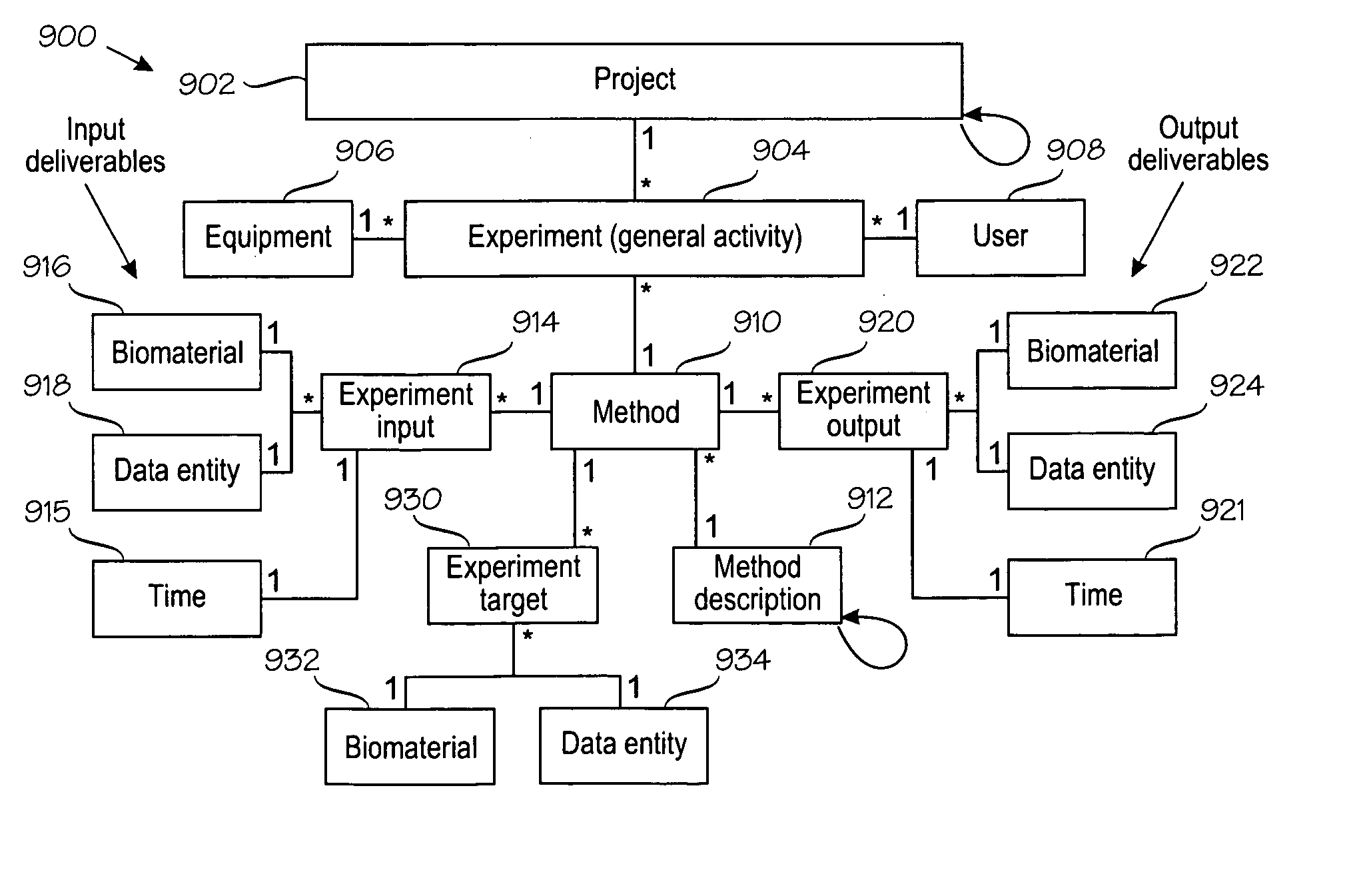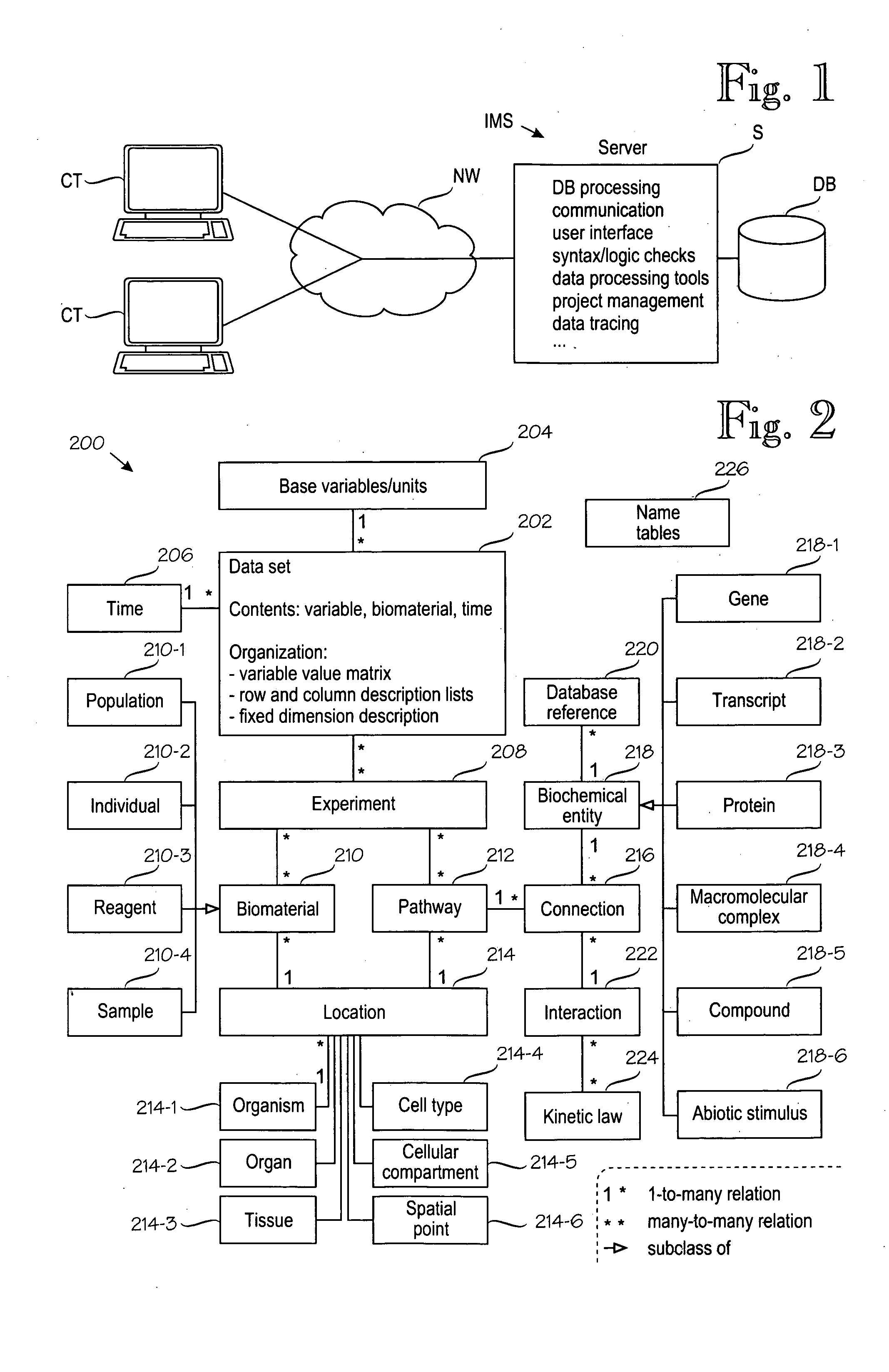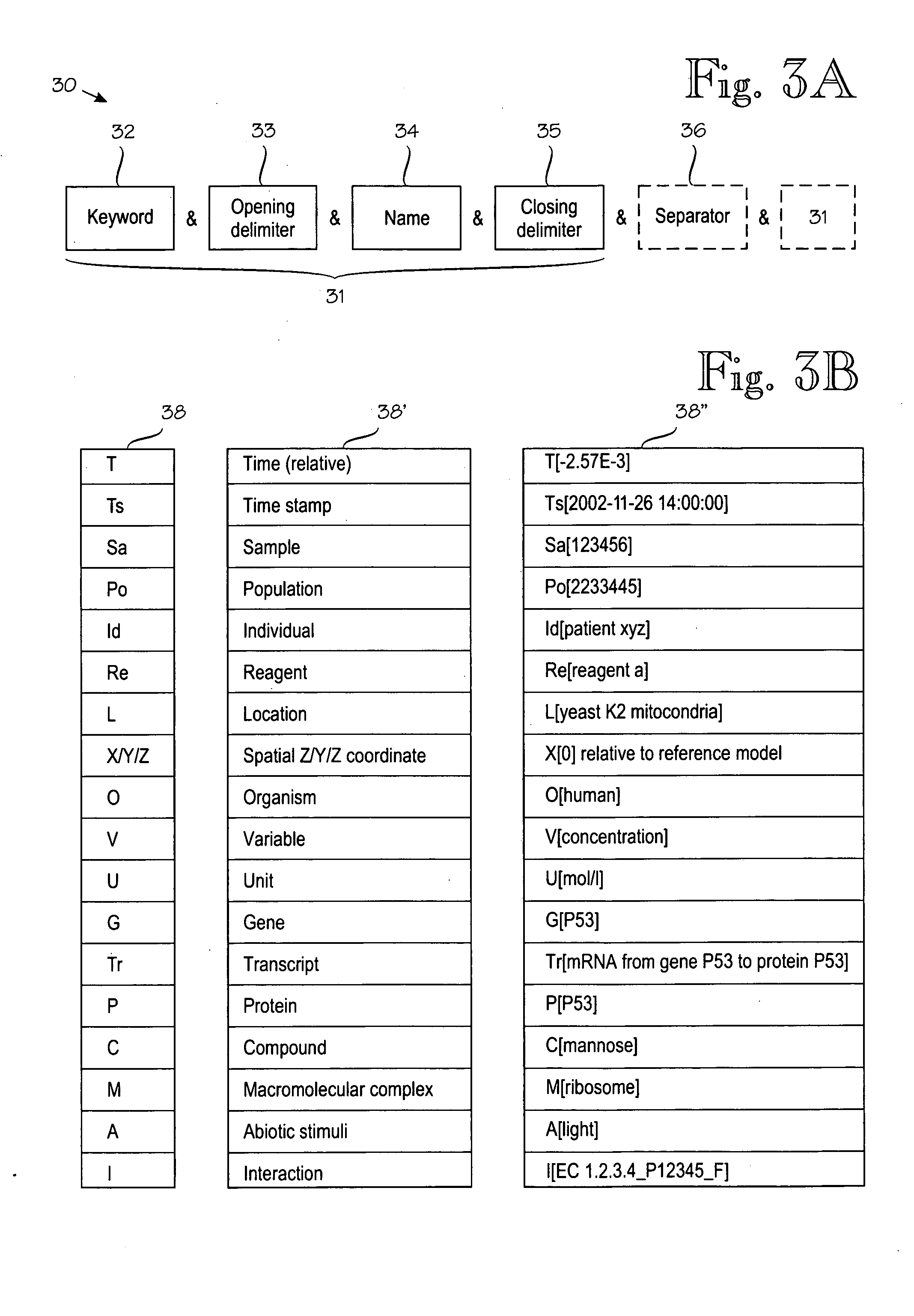Information management system for biochemical information
a biochemical information and information management technology, applied in the field of information management systems, can solve the problems of inability to interpret stored information using external knowledge, and inability to accommodate new types of information, so as to facilitate automatic syntax or other checks, reduce the number of individual data items, and increase the processing speed of ims
- Summary
- Abstract
- Description
- Claims
- Application Information
AI Technical Summary
Benefits of technology
Problems solved by technology
Method used
Image
Examples
example
V[concentration]P[P53]U[mol / l]Id[Patient X]L[human cytoplasm]=0.01.
[0181] A benefit of this kind of location information is an improved and systematic way to compare locations of samples and locations of theoretical constructs like pathways that need to be verified by relevant measurement results.
[0182] Another advantage gained by storing the biomaterials section substantially as shown in FIG. 10 relates to visualization of data. For example, biomaterials can be replaced with their phenotypes. An example of such replacement is that certain individuals are classified as “allergic”, which is far more intuitive to humans than a mere identification.
[0183] Data Traceability
[0184] Data traceability is based on the time information 915 and 921 associated with experiment inputs and outputs 914 and 921, respectively (see FIG. 9A). FIGS. 11A and 11B demonstrate data traceability in the light of two examples. FIG. 11A shows a sampling scenario. All samples are obtained from a certain indivi...
PUM
| Property | Measurement | Unit |
|---|---|---|
| time | aaaaa | aaaaa |
| reaction rate | aaaaa | aaaaa |
| reaction rate | aaaaa | aaaaa |
Abstract
Description
Claims
Application Information
 Login to View More
Login to View More - R&D
- Intellectual Property
- Life Sciences
- Materials
- Tech Scout
- Unparalleled Data Quality
- Higher Quality Content
- 60% Fewer Hallucinations
Browse by: Latest US Patents, China's latest patents, Technical Efficacy Thesaurus, Application Domain, Technology Topic, Popular Technical Reports.
© 2025 PatSnap. All rights reserved.Legal|Privacy policy|Modern Slavery Act Transparency Statement|Sitemap|About US| Contact US: help@patsnap.com



